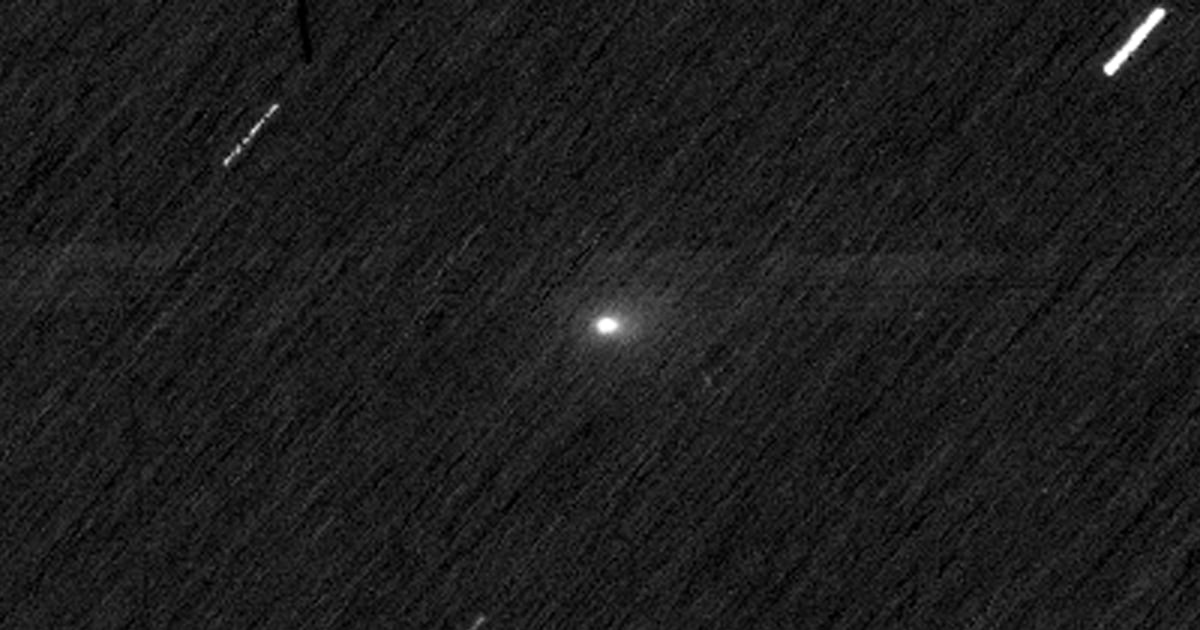The bright dot is the center of the comet, made up of a solid nucleus of ice, rock and dust. The nucleus is typically shrouded in a glowing cloud of dust and gas, known as the coma.
Since comet 3I/ATLAS was first detected in July, it has attracted intense interest among astronomers and amateur space enthusiasts. The object has even fueled outlandish theories that it could be extraterrestrial technology or an alien spacecraft, though there is no scientific evidence to support such claims.
The comet isn’t here to stay.
Astronomers studying its movements say the object’s orbital path will take it swinging through the inner solar system in the weeks ahead, with the comet reaching its closest point to the sun on or around Oct. 30.
3I/ATLAS does not pose a threat to Earth and will remain roughly 170 million miles away during its flyby, according to NASA.
Its much closer approach to Mars, however, offered a unique opportunity.
The ExoMars Trace Gas Orbiter, jointly operated by ESA and Russia’s Federal Space Agency, trained its camera on the comet for about a week beginning on Oct. 1, ESA officials said. During that time, 3I/ATLAS was approximately 18.6 million miles from the spacecraft.
But the orbiter’s instruments were designed to snap photos of the surface of Mars, not objects millions of miles away, said Nick Thomas, principal investigator for the spacecraft’s imaging system.
“This was a very challenging observation for the instrument,” he said in a statement. “The comet is around 10,000 to 100,000 times fainter than our usual target.”
The two other interstellar objects confirmed as visitors from beyond our solar system were ‘Oumuamua in 2017 and comet 2I/Borisov in 2019.
“Every planet, moon, asteroid, comet and lifeform in our solar system share a common origin,” the ESA said in a statement. “But interstellar comets are true outsiders, carrying clues about the formation of worlds far beyond our own.”
As 3I/ATLAS passes through the solar system, astronomers are therefore keen to study its size and physical properties. The object was visible to ground-based telescopes earlier this year but is now too close to the sun to observe. It is expected to emerge into view again on the other side of the sun by early December, according to NASA.
NASA monitored 3I/ATLAS using the Hubble Space Telescope over the summer and is planning additional observations in the months to come. Among the spacecraft and observatories hoping to glimpse the object are the James Webb Space Telescope, SPHEREx space observatory, Parker Solar Probe and Transiting Exoplanet Survey Satellite.
A photo taken Saturday by a camera on NASA’s Perseverance rover on Mars captured a streak of light, sparking speculation online that the white smudge may have been comet 3I/ATLAS. But NASA has not confirmed whether that’s the case, and the agency’s public outreach office is closed as a result of the government shutdown.
ESA’s Mars Express spacecraft also pointed its camera at the comet as it flew by, but officials said additional analysis is needed to try to pick out the interstellar object from those observations.

